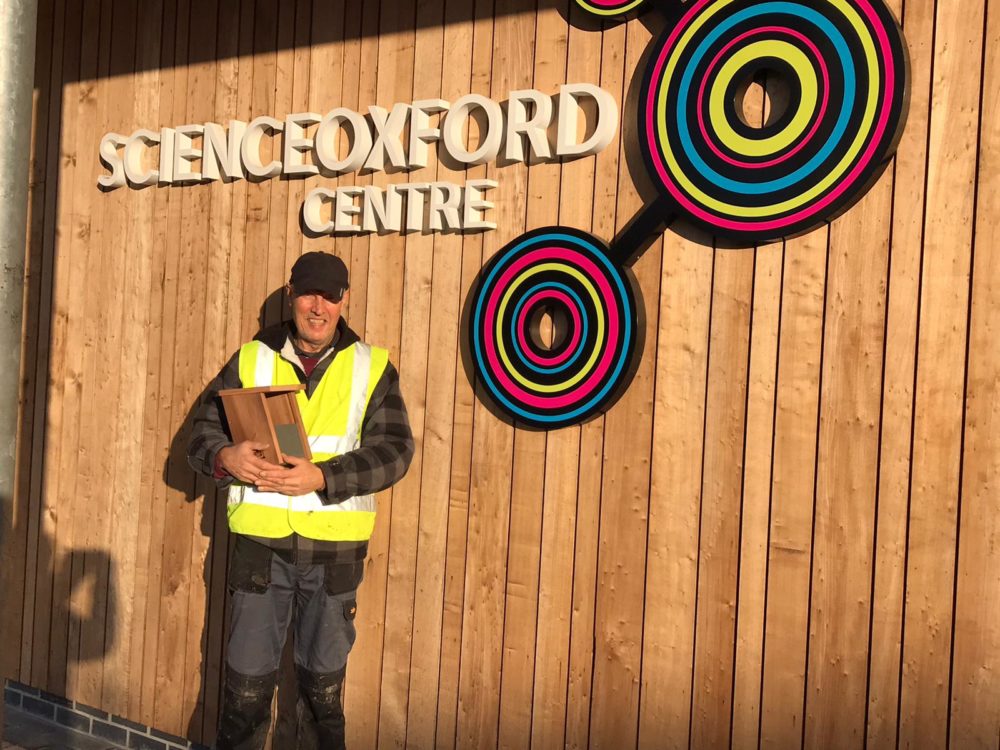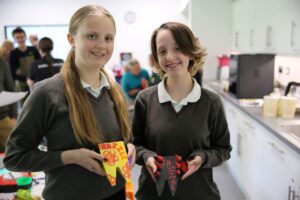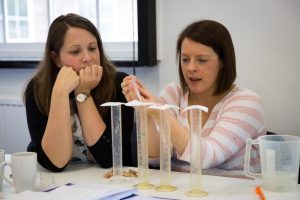Nest Generation: celebrating National Nest Box Week at Science Oxford
Wednesday 10th February 2021
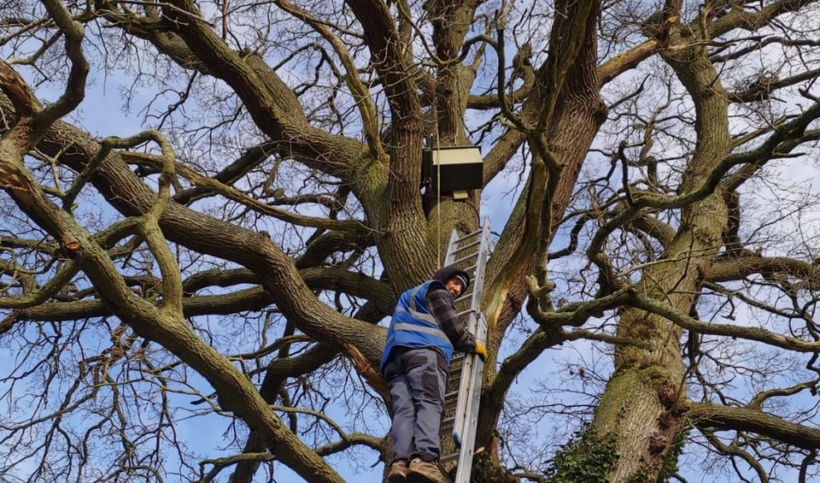
Britain’s wildlife is close to all our hearts, especially at the moment during lockdown. To celebrate National Nest Box Week – starting on 14th February, we take a look at our nest box programme in the woodland surrounding our Science Oxford Centre and see what families can do to get involved at home.
Why celebrate Nest Box Day? Sadly, most species of wildlife are in decline in the UK, and one reason is the increasing loss of natural nesting habitat.
According to the 2019 RSPB State of Nature Report, populations of the UK’s most important wildlife have plummeted by an average of 60% since 1970; 41% of species have decreased in abundance; and 15% of species are now threatened with extinction. Hedgehogs, bats and dormice are some of the most endangered mammals but there has been a general decline in all of our native species of amphibians and reptiles, and a whopping 59% decline in insects, with butterflies and moths among the worst hit.
This is where Vic Toplisek, nature lover and owner of ‘Nests 4 Nature’ comes in. Vic designs, builds, installs and maintains sustainable nest boxes. Thanks to him, we now have over 20 boxes installed in our woodland, including one or two right outside our centre, so we can watch the birds come and go feeding their chicks whilst we’re having our own lunch!
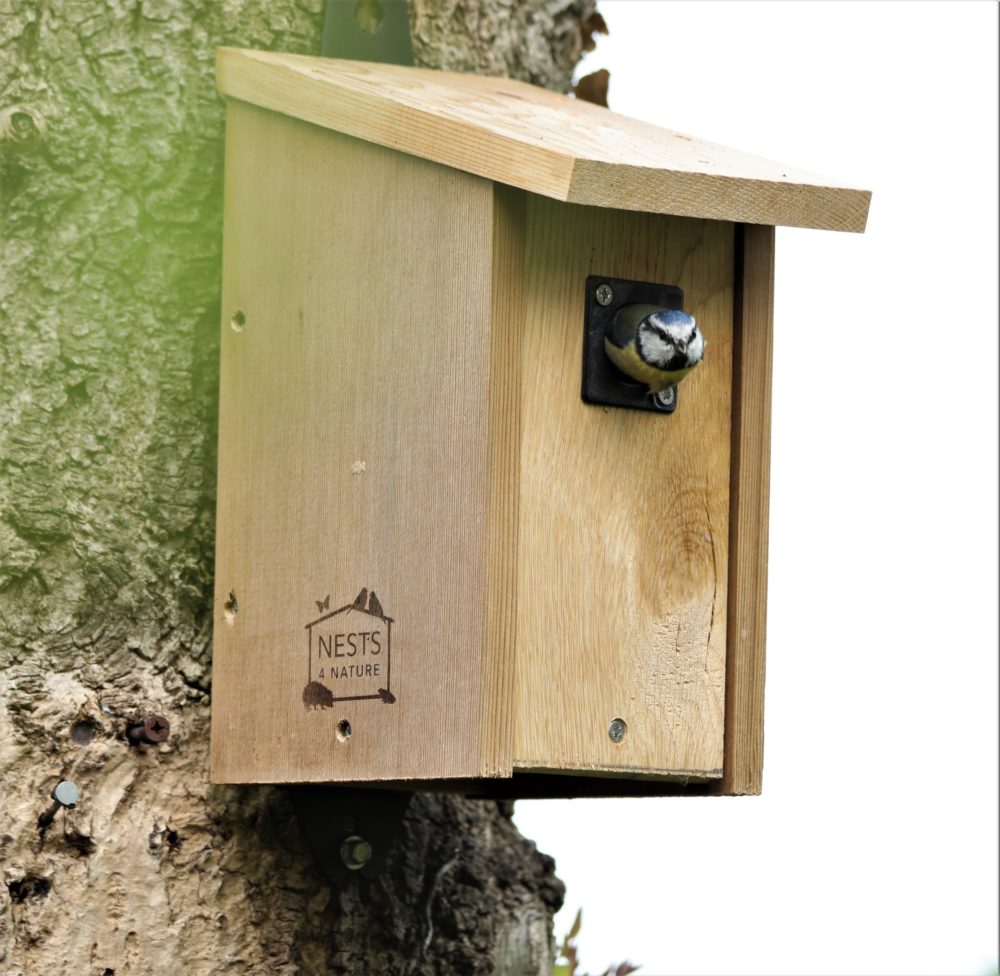
Our woodland is virtually the only woodland remaining within the city of Oxford and provides a fantastic urban wild-space complete with ponds, trails and grassland, all of which provide a wonderful variety of wildlife habitats. Children and young people can visit and learn about the environment as part of our STEM primary school programme, Forest School groups and family visits on our Science Oxford Family Open Days. Our conservation project, led by Outdoor Learning and Ecology Manager Roger Baker with Oxfordshire Conservation Volunteers, aims to bring our woodland back to its former glory and increase biodiversity.
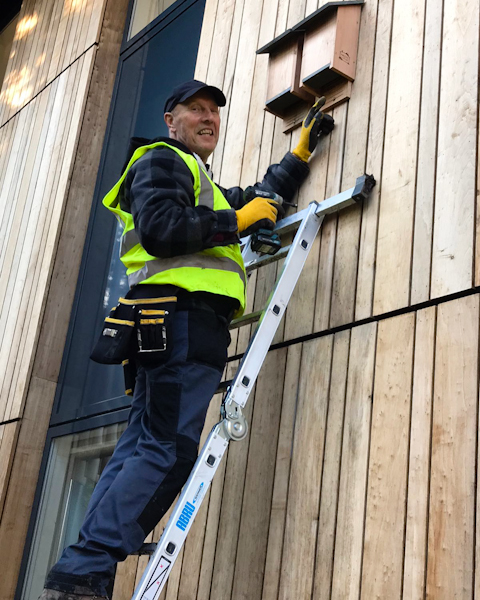
Vic installs nest boxes outside the Science Oxford Centre
Vic is keen to inspire children about nature and the environment. He says, “The wonderful thing about bird boxes is that if you are observant and patient you get to see some wonderful bird behaviour. During spring and early summer birds will be choosing nesting sites and collecting building materials to construct their nests, and then during late May and early June the adult birds will be out and about frantically finding food for their fledglings. It’s great to get children outside watching and listening – finding out things for themselves. I want them to discover the amazing creatures we have around us.”
Vic has been working with us since 2020 and running a case study on the success of the nest boxes, cleaned and repaired on an annual basis to ensure that they are fit for use Year after Year. It’s great news that many in our woodland – in fact over 85% – are already providing cosy homes for a range of birds from Blue Tits, Great Tits, Coal Tits, and Robins and in the future we hope to attract even more species.
The boxes are lovingly crafted from sustainable and recycled materials, as only the best will do for our feathered, beaked and clawed friends. “The real key is in the maintenance of nest boxes every year, it is essential to clear out old nests and remove any mites, lice or other parasites that would adversely affect the new brood. In addition, the boxes themselves may have to be repaired if they have suffered damage from woodpeckers or squirrels” says Vic. “Or sometimes wintering creatures are just plain messy, and we need to properly prepare the box for the next inhabitants!” Vic doesn’t just make new homes for birds but also man-made habitats for mammals, such as hedgehogs, insects, amphibians and reptiles – including grass snakes!

In the longer term, we can work towards recreating full biodiversity in our woodland, by providing habitats for larger birds such as woodpeckers, owls or even kestrels – and all the other creatures big and small that make up the food chain. He’s even got ideas for a big bat roost! We’re hoping that one day we’ll have a proper “Farthing Wood”, teaming with wildlife – then there will be so much to for the children visiting the Centre to see and learn about, and for future generations to enjoy.
So how can families at home during lockdown get involved now? Vic says, “Buy a bird feeder for the garden or window sill and see who visits, and really look at the details of each bird, their colours, beaks, feathers, size and try to listen to their song too. Then if your garden allows, buy a good quality bird box. A standard hole fronted nest box is great to start with, but remember good quality is key, after all you wouldn’t want to live in a home that’s damp and not secure, so you shouldn’t provide a poor quality home for your feathered friends. If we can encourage children to be passionate about our wildlife, they will want to look after it in the future. By acting now and practising ‘Sustainable Conservation’, we will create an environment where the full natural cycle can not only survive but thrive, and that’s good for all of us.”
You can find out more about Vic’s projects at his Nests 4 Nature website.
See our Recommended Resources for downloadable resources for children and families to try at home here.
Why not ‘tweet’ any birds you spot @scienceoxford
#NationalNestboxWeek
